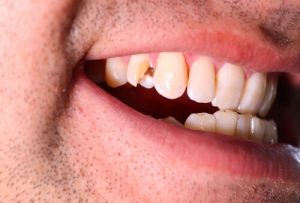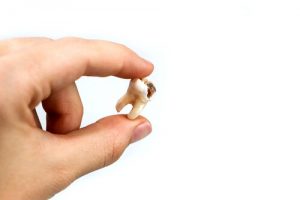When you discover a cracked tooth, panic and questions often arise immediately. Can a cracked tooth heal on its own? Yes, one of the most common concerns is whether the tooth can heal independently or if medical intervention is necessary. The answer, unfortunately, is not as straightforward as we’d like. While teeth are remarkably resilient and capable of withstanding daily wear and tear, their ability to self-repair is limited. This article explores whether or not a cracked tooth can heal, what treatment options are available, and when professional dental care is essential for long-term oral health.
The Anatomy of a Tooth
Understanding the anatomy of a natural tooth is essential for grasping why teeth have limited self-repair abilities. A tooth comprises multiple layers, each serving a specific function.
Enamel
The outermost layer, enamel, is the hardest and most mineralized substance in the human body. It serves as a protective shell for the softer tissues inside the tooth. While remarkably resilient, enamel can crack or chip if extreme stress or temperature changes occur.
Dentin
Below the enamel is dentin, a porous substance that is also quite hard but not as tough as enamel. Dentin provides another layer of protection and supports the enamel. It’s also more sensitive, meaning that when enamel is cracked or eroded, you’re more likely to experience tooth sensitivity due to the exposed dentin.
 Pulp
Pulp
The innermost layer of the tooth is the pulp, which houses the tooth’s nerve and blood vessels. The pulp nourishes the tooth and reacts to external stimuli, like temperature changes. Damage to the pulp often requires immediate dental intervention because it can lead to infections and severe pain.
Root and Periodontal Ligaments
The tooth is anchored in the jawbone by its root and is cushioned by periodontal ligaments. These ligaments also serve as shock absorbers during activities like chewing and biting.
Types of Cracked Teeth
When it comes to cracked teeth, not all cracks are created equal. The crack’s type, location, and severity can determine whether the broken tooth can heal on its own or whether professional treatment is necessary. Understanding the various types of cracked teeth can help you make more informed decisions about your dental care.
Hairline Cracks in the Enamel
These are minor cracks that affect only the outer enamel layer. Often, these cracks are superficial and may not even extend through the entire thickness of the enamel. Hairline cracks are usually not a cause for immediate concern, but they can be a gateway for decay and should be monitored. Some may improve with remineralization or fluoride treatment.
Cracked Cusp
The cusp is the pointed part of the chewing surface of your tooth. A cracked cusp often occurs around a dental filling. It may break off or be removed by a dentist, but it generally doesn’t affect the tooth’s pulp and is less likely to cause pain. Often, a dental crown or onlay can restore the tooth’s shape.
Vertical Cracks that Extend Towards the Root
These more severe cracks begin at the chewing surface and extend downwards towards the root. Unlike a cracked cusp, a vertical root fracture can extend into the tooth’s pulp, making it potentially more painful and susceptible to infection. Vertical root fractures are often discovered when the surrounding bone and gum become infected. Treatment for this kind of crack could involve root canal therapy and a dental crown.
Split Tooth
This is a severe form of a cracked tooth, where the tooth is split into two separate segments. It usually occurs as a progression of an untreated or unnoticed crack and can extend from the surface into the root. Depending on the extent of the split, part of the tooth fracture may be saved, or it may need to be extracted entirely.
Can a Cracked Tooth Heal on Its Own?
One of the most pressing questions when discovering a fractured or cracked tooth is whether the tooth can heal without professional intervention. The capability for self-repair in teeth is quite limited compared to other tissues in the body, like skin or bone. However, certain types of minor damage may be less critical and could potentially improve over time with proper care.
Natural Recovery Options
- Remineralization: This is the natural process of redepositing minerals in tooth enamel. Saliva plays a role in remineralization, but it is generally insufficient to heal a crack. Products like fluoride toothpaste can assist this process.
- Fluoride Treatment: Stronger fluoride treatments, which you can get from a dentist, can help strengthen tooth enamel, making it more resistant to cracks and decay. However, fluoride treatments can’t repair existing cracks.
Cases When Natural Recovery is Possible
For minor hairline cracks, especially those that do not cause discomfort and do not extend beyond the enamel, there’s a chance that remineralization or fluoride treatments could be enough to manage the issue. However, these solutions do not ‘heal’ the tooth so much as potentially prevent further damage.
 Cases When Professional Treatment is Necessary
Cases When Professional Treatment is Necessary
- Vertical Cracks or Cracks Reaching the Pulp: These cracks are unlikely to heal on their own and can lead to untreated infections.
- Split Tooth: A split tooth cannot heal on its own and will likely require extraction or significant restorative work.
- Cracked Cusp: If the cusp of a tooth is cracked, you will likely need a crown or onlay to prevent further damage.
Tooth Sensitivity or Pain
Any tooth sensitivity or pain is generally a sign that the crack has reached the more sensitive inner layers of the tooth, indicating that professional treatment is necessary.
Treatment Options for a Cracked Tooth
While it would be great if our teeth could simply repair themselves after sustaining damage, we can’t rely on natural remedies for dental health. Discovering that you have a damaged tooth can be unsettling, but the good news is that modern dentistry offers a variety of treatment options to restore your oral health. The type and severity of the crack and the presence of any symptoms like pain or sensitivity will guide your dentist in determining the most appropriate treatment for you. Here are some common treatment options for different kinds of cracked teeth.
Dental Bonding
For minor cracks, especially those limited to the enamel, dental bonding is an option. This procedure applies a tooth-colored resin material to the cracked area and hardens using a special light. This treatment is usually done in a single visit and is less invasive than other options.
Root Canal Therapy
If a crack has extended into the pulp of the tooth, a root canal may be necessary to remove the affected tissue and seal the tooth. This can save the tooth and prevent further complications like infection. Typically, a crown will be placed after a root canal to strengthen the tooth.
Dental Crowns
Dental crowns are often recommended for cracks that have compromised the tooth’s structural integrity. A crown can provide a protective covering, made of porcelain, metal, or a combination of both, that restores the tooth’s form and function. This usually requires at least two visits to the dentist.
Dental Onlays
For cracked cusps or for cracks that affect only a part of the tooth, a dental onlay might be recommended. An onlay covers the affected area and provides strength and support but is less extensive than a full crown.
 Extractions and Dental Implants
Extractions and Dental Implants
In severe cases, such as a completely split tooth or one where the crack extends below the gum line, tooth extraction may be the only option. Once the tooth is removed, it can be replaced with a dental implant, a bridge, or a partial denture to restore functionality and aesthetics.
Importance of Prompt Treatment
Delaying treatment can lead to complications such as infection, abscess formation, and even tooth loss. Even if you have a minor crack that seems to be causing no problems, it’s advisable to consult a dental professional for an accurate diagnosis and appropriate treatment plan.
References:
https://my.clevelandclinic.org/health/diseases/21628-fractured-tooth-cracked-tooth
https://www.aae.org/patients/dental-symptoms/cracked-teeth/
https://www.healthline.com/health/cracked-tooth
https://www.dentalhealth.org/cracked-teeth
https://www.webmd.com/oral-health/repairing-a-chipped-or-broken-tooth
https://www.nhs.uk/conditions/chipped-broken-or-cracked-tooth/
https://www.medicalnewstoday.com/articles/322015
https://www.verywellhealth.com/toothache-relief-from-a-cracked-or-broken-tooth-1059317




